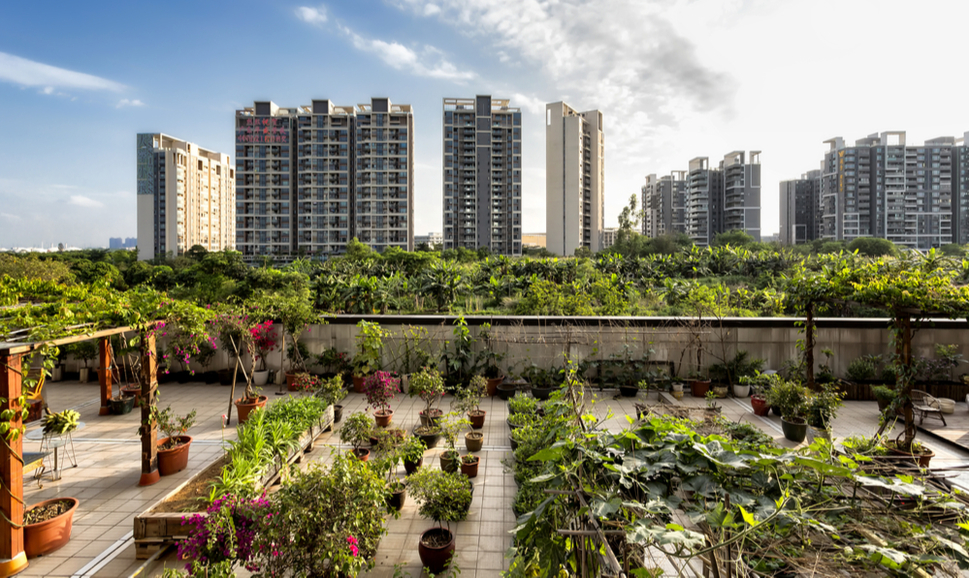
Urban and peri-urban agriculture, according to the Food and Agricultural Organization of the United Nations, play a key part in the world’s food and nutritional security, hence the organisation is attempting to promote these activities through the Urban Food Agenda.
Urban Agriculture
- Agriculture in urban and peri-urban regions is referred to as urban agriculture. Peri-urban areas are those that are situated between the periphery of metropolitan and regional centres and the rural environment, shifting from rural land uses (such as agricultural or animal production) to urban ones (such as the built environment, manufacturing, services, and utilities).
- Food and non-food product cultivation: Urban agricultural methods aim to cultivate or develop a variety of food and non-food items, and include tasks like livestock rearing, aquaculture, beekeeping, and large-scale floriculture.
Potential of Urban Agriculture in Indian Cities
- Little area India has a sizable population, with its total urban area estimated to be roughly 222,688 square kilometres, or 6.77 percent of the nation’s total land area. Around 500 million Indians, or 35% of the country’s total population, reside in this little region.
- Less space is available for conversion to green spaces: According to the Urban & Regional Development Plans Formulation & Implementation guidelines, Indian cities should set aside 10% of their geographic space for greens (gardens, playgrounds, public parks, and the like). This would leave 22,268 sq. km of the total urban area available for conversion to public green spaces.
- Urban agriculture is hindered by space constraints: Even if 111,34 sq km (half of this area) were dedicated to urban agriculture rather than parks, gardens, playgrounds, and horticulture, this would still represent only 5% of the nation’s total urban area and 0.56 % of its agricultural land. This illustrates the spatial limitations that urban agriculture must deal with.
Use of technology
- Building freestanding crop beds above the current soil level is a farming practise known as raised bed farming. In order to create a closed planting bed, raised beds are occasionally covered with plastic mulch. The technique makes it possible to better manage the soil and lessen soil compaction. Additionally, the planted area is shielded from excessive rain. The productivity of this strategy is significantly higher than conventional farming.
- Container gardening: Growing plants in containers as opposed to putting them in the ground is known as container gardening. Polyethene plastic bags, clay pots, plastic pots, metallic pots, milk jugs, ice cream tubs, bushel baskets, barrels, and planter box bottles are a few examples of containers. It is possible to cultivate the majority of vegetables in containers in backyard gardens.
- Aquaponics: A closed-loop aquaponics system makes use of the advantages of the nitrogen and carbon cycles, two fundamental ecological building blocks. Plants are fertilised and watered with fish water that is rich in nutrients. Only a few inputs are needed by this system, principally energy and certain essential plant nutrients.
- By stacking numerous crop racks vertically and creating multiple layers on a single plot of ground, the vertical farming approach fundamentally tries to increase the amount of agricultural area.
- Using raised beds, row farming, or a hydroponic greenhouse, food crops can be cultivated under rooftop plant production (RPP) systems. Growing plants in a nutrient solution with or without a soilless substrate to give physical support is known as hydroponics. The cultivation area is maximised using RPP systems using artificial lighting. RPP can be used to grow crops that need greater vertical space and stronger lighting.
Conclusion
Urban agriculture encounters a number of obstacles, but each of these can be overcome by implementing a variety of technological solutions, establishing urban agriculture initiatives in peri-urban areas, launching community initiatives in open areas, and changing planning guidelines and local ordinances to recognise urban agriculture as a ULB activity.
